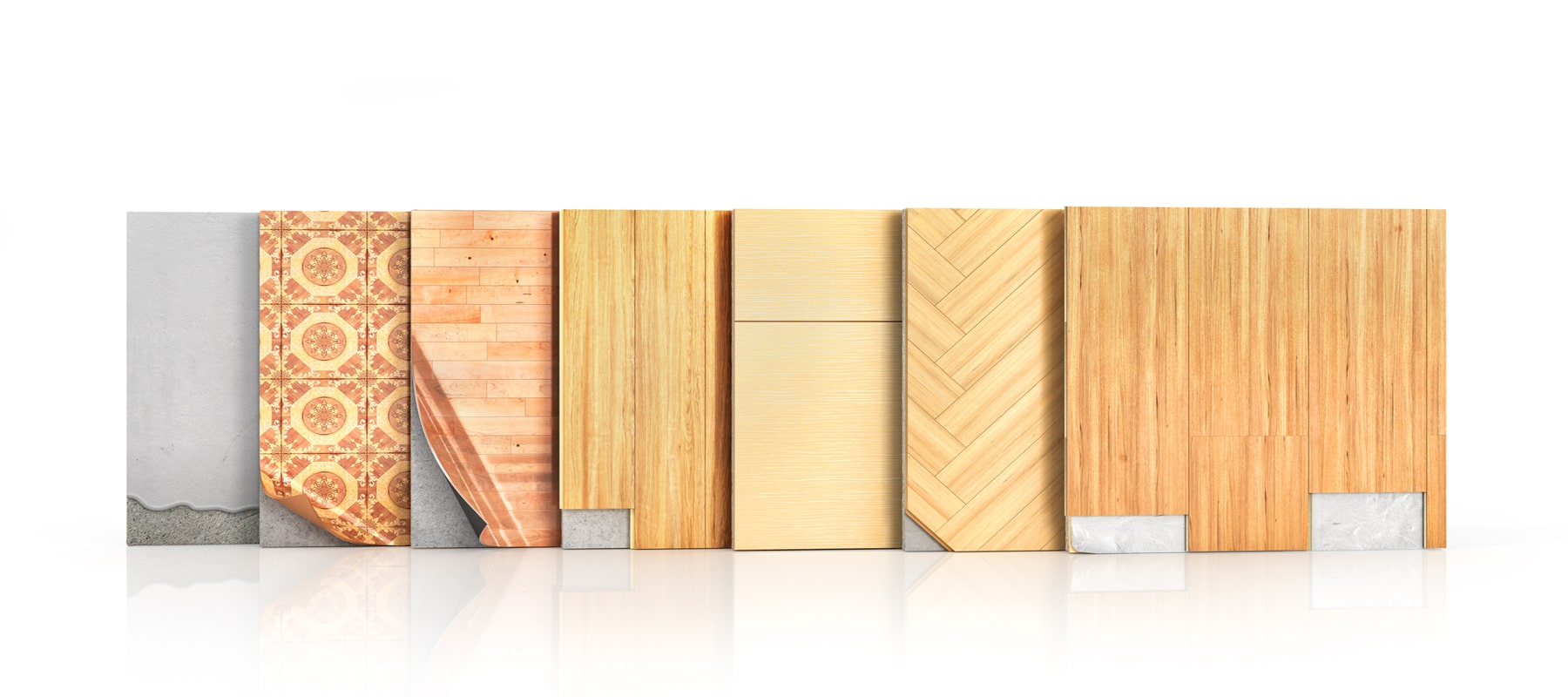Solid vs. Engineered vs. Laminate Hardwood Flooring
Last Updated: January 14, 2022
On This Page
Homeowners interested in wood floors have more options than ever before. Solid hardwood is, of course, the standard bearer; no other wood flooring product can match its beauty and character. Engineered and laminate floors, however, can be installed in places where hardwood cannot, and they typically come with a lower price tag. This consumer guide from Cost Owl contains detailed information about each product, including pricing, that will help you decide which one is right for your project.
Wood Flooring Types #
Solid Wood #
This is the real deal: 100% wood planks harvested from trees (whether it be domestic oak, maple, or cherry, exotic zebrawood, teak, or Brazilian cherry, or one of dozens of other species).
Once you've got a wood species picked out, decide how you want it finished. Light and dark colors, as well as satin, gloss, and semi-gloss finishes, are available. If you choose to go with unfinished planks, rather than those that come prefinished and ready to install from the factory, you'll be able to fully customize the wood's appearance, but prefinished planks have a number of finish options that offer excellent protection against UV rays, abrasions, and other leading sources of wear.
You can further personalize the look of wood floors by choosing distressed flooring (made to look antique), reclaimed flooring (actually antique, rescued from old buildings), wide-width planks, and hand-scraped flooring.
Wood floors can be refinished (sanded and treated to a new finish coat) a number of times depending on the wood's initial thickness. This process allows wood floors with surface damage to last for decades, even centuries. Indeed, the timelessness and enduring value of solid hardwood are ultimately what make this such a desirable flooring product.
Engineered Wood #
Despite its numerous superlatives, wood flooring is not perfect. For starters, it must be attached to a wood subfloor, so it can only be installed at ground level or above (i.e. no hardwood in the basement). Wood also is vulnerable to changes in humidity. As the wood expands and contracts according to how dry or moist the air is, boards can warp, cup, and even split. And as just about everyone knows, moisture is very damaging to wood.
Some of these issues are mitigated by engineered floors, which have a top layer of real hardwood (available in just about any species, style, and color), and a core made from plywood sections laid crossways to each other. This multi-ply construction gives engineered flooring better dimensional stability than solid wood, meaning it is less likely to distort in the face of moisture and temperature change. Engineered products can therefore be used in light-moisture areas such as bathrooms and basements. They can also be installed as a "floating" floor (no subfloor required) or nailed or glued down, providing maximum installation flexibility. And like real wood, engineered wood can be refinished (albeit fewer times).
Laminate #
It's a stretch to call laminate a type of wood flooring. After all, aside from a wood chip or fiberboard core, it doesn't contain any real wood. The top layer, which is made to resemble wood, is in fact a printed image. A clear, protective wear layer sits atop the wood grain pattern, while melamine resin binds the flooring together.
The main reason why homeowners choose laminates over true wood products is cost. But aside from being significantly cheaper than solid and engineered wood, laminate flooring does offer distinct advantages.
First among them is product selection: laminates can closely mimic not only any wood species, but also stone and tile floors. Laminate is also very durable flooring that can be used where homeowners would hesitate to use real wood. If you have kids or pets and are worried about them damaging wood floors, laminate may be the way to go.
Laminate flooring does, however, need to be swept or vacuumed regularly, as dirt and grime can act as abrasives on its surface. This is important to keep in mind because unlike real wood floors, you can't refinish worn-out laminate floors.
But what you can do with laminate is install it as a floating floor. In the case of glueless laminates, installation is as simple as clicking together interlocking sections of flooring and laying them in place, making this a feasible DIY product. An underlayment can be used for increased comfort and noise reduction.
Solid, Engineered, and Laminate Flooring Costs #
The following prices are meant as a general guide only. Actual costs may vary depending on the product selected and your location.
- Hardwood flooring generally costs $3 to $10 per square foot; exotic or less common species will be more expensive.
- Engineered flooring can be purchased for $2 to $10 per square foot.
- Laminate flooring costs $1 to $3 per square foot.
- The cost to install flooring is approximately $2 to $4 per square foot. Floating floors can be cheaper to install, while finishing wood floors onsite is more expensive.
